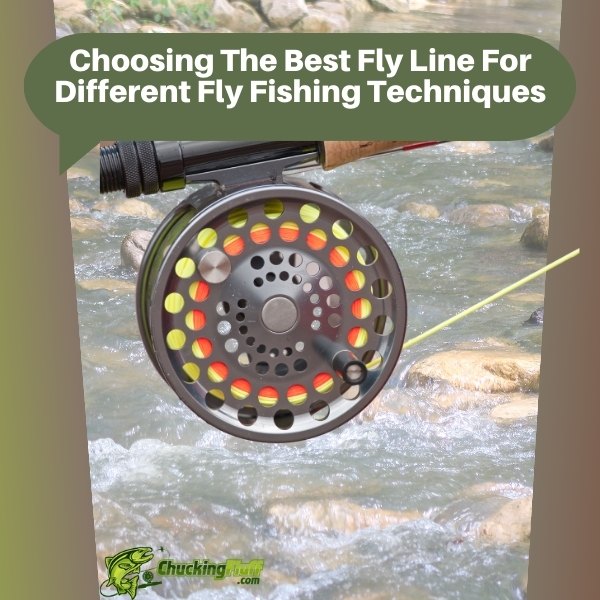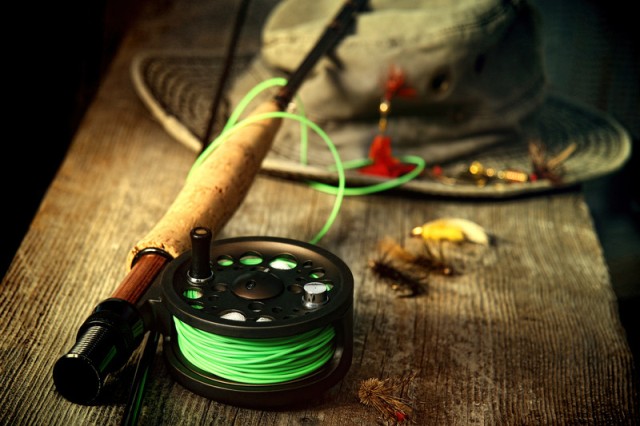| Disclosure: Just to be open and honest the buttons and links you click on in the website will in most cases take you to another website where you can purchase the products I am reviewing. As an Amazon Associate I earn from qualifying purchases. |
Choosing The Best Fly Line For Different Fly Fishing Techniques
Quick Post Navigation

Understanding Fly Fishing Basics
Fly fishing is more than just a hobby; it’s a refined art that requires precision, patience, and a profound understanding of nature. The fly line is the backbone of this art, acting as the primary link between the angler and the fish. Different fly fishing techniques demand specific types of fly lines to maximize efficiency and success. In this article, we’ll delve deep into the various fly fishing techniques and the best fly lines suited for each.
Types of Fly Fishing Techniques
Fly fishing techniques vary widely, each requiring a unique approach and specialized equipment. Let’s explore the most popular techniques and identify the optimal fly lines for each.
Dry Fly Fishing
Characteristics of Dry Fly Fishing
Dry fly fishing is often considered the pinnacle of fly fishing. It involves casting a buoyant fly that mimics an adult insect on the water’s surface. The visual thrill of seeing a fish rise to take the fly is unmatched. This technique is usually employed in clear, slow-moving waters where fish can be seen rising to feed.
Dry fly fishing demands finesse and precision. The fly must land gently on the water to avoid spooking the fish, and it should drift naturally to imitate a live insect. This technique is typically used for trout and other surface-feeding fish.
Best Fly Lines for Dry Fly Fishing
For dry fly fishing, a weight-forward (WF) floating line is ideal. The weight-forward design helps with casting accuracy and distance, allowing anglers to place their flies precisely where they need to be. A floating line is essential because it keeps the fly on the surface, maintaining the illusion of a natural insect.
When selecting a fly line for dry fly fishing, consider the following features:
- Supple Texture: A soft, supple line ensures delicate presentations and reduces drag on the water.
- High Visibility: Lines with bright or high-contrast colors help you track the fly and detect subtle strikes.
- Long Front Taper: A longer front taper enhances accuracy and provides a smoother, more controlled cast.
Nymphing
Characteristics of Nymphing
Nymphing involves using subsurface flies that imitate immature aquatic insects, crustaceans, or other underwater prey. Unlike dry fly fishing, nymphing targets fish feeding below the surface. This technique is effective in various water conditions, from fast-moving rivers to still ponds.
Nymphing requires a good understanding of the underwater environment and fish behavior. Anglers often use indicators or strike detectors to signal when a fish takes the nymph, as these strikes can be subtle and difficult to detect.
Best Fly Lines for Nymphing
For nymphing, both double-taper (DT) and weight-forward (WF) floating lines are popular choices. Here’s why:
- Double-Taper Lines: DT lines offer better control and more delicate presentations, making them suitable for short casts and precise nymph placements.
- Weight-Forward Lines: WF lines are easier to cast over longer distances and can handle heavier nymph rigs, making them versatile for various nymphing scenarios.
Additional considerations for nymphing fly lines include:
- Increased Weight: Lines with additional weight in the front help sink the nymph quickly to the desired depth.
- Long Front Taper: Similar to dry fly fishing, a long front taper enhances control and sensitivity, which is crucial for detecting subtle strikes.
- Indicator Compatibility: Some lines come with integrated strike indicators or loops for attaching indicators, making it easier to detect takes.
Streamer Fishing
Characteristics of Streamer Fishing
Streamer fishing is a more aggressive technique where anglers use larger flies that imitate baitfish, leeches, or other sizable prey. This method is particularly effective for targeting larger, predatory fish like bass, pike, and trophy trout.
Streamer fishing involves casting and retrieving the fly to mimic the movement of a swimming prey. This technique can be used in various water conditions, from deep lakes to fast-flowing rivers. The key to success is often the retrieve, which should imitate the erratic movement of injured or fleeing prey.
Best Fly Lines for Streamer Fishing
For streamer fishing, sinking tip lines or full sinking lines are the best choices. These lines help get the streamer down to the fish’s level quickly and maintain the right depth during the retrieve.
Key features to look for in streamer fishing fly lines include:
- Weight-Forward Design: WF lines are ideal for casting heavy, bulky streamers and achieving long distances.
- Sinking Tip: A sinking tip line has a section of sinking line at the tip, allowing the streamer to sink while the rest of the line floats. This combination is perfect for fishing in various depths and maintaining control during the retrieve.
- Full Sinking Lines: These lines are entirely designed to sink, making them suitable for deep water fishing where getting the fly down quickly is crucial.
Wet Fly Fishing
Characteristics of Wet Fly Fishing
Wet fly fishing involves using flies that sink below the surface and drift naturally with the current. These flies can imitate drowned insects, larvae, or emerging nymphs. Wet fly fishing is a versatile technique that can be used in both still and moving waters.
The success of wet fly fishing relies on the angler’s ability to read the water and understand the fish’s feeding habits. Wet flies are often fished in groups, known as a “cast,” to increase the chances of a strike.
Best Fly Lines for Wet Fly Fishing
A weight-forward (WF) floating line with a sink tip is ideal for wet fly fishing. This setup allows the fly to sink while keeping part of the line on the surface, providing better control and sensitivity.
Consider these features when choosing a fly line for wet fly fishing:
- Medium Taper: A medium taper balances casting distance and accuracy, making it easier to present wet flies naturally.
- Sink Tip: The sink tip helps the wet fly reach the desired depth while maintaining control over the drift.
- Versatility: Look for lines that perform well in various water conditions, as wet fly fishing often involves adapting to different environments.
Key Factors in Choosing a Fly Line
Choosing the right fly line is essential for maximizing your fishing success. Here are the key factors to consider:
Fly Line Weight
Fly line weight is standardized, ranging from 1 to 14, with higher numbers indicating heavier lines. The weight of the fly line must match the weight of your fly rod to ensure optimal performance. A balanced setup enhances casting accuracy and fly presentation.
- Lightweight Lines (1-3): Suitable for small streams and delicate presentations, often used for small trout or panfish.
- Medium Weight Lines (4-6): Versatile and suitable for a wide range of fishing conditions, ideal for trout, bass, and similar species.
- Heavyweight Lines (7-14): Designed for large, powerful fish like salmon, pike, and saltwater species. These lines are capable of casting large flies and handling strong winds.
Fly Line Taper
The taper of a fly line affects its casting characteristics and overall performance. Common tapers include:
- Weight-Forward (WF): Concentrates most of the weight in the front section, making it easier to cast long distances and handle wind. Ideal for beginners and versatile for various techniques.
- Double-Taper (DT): Symmetrical design with an even weight distribution, providing delicate presentations and better control. Suitable for short to medium casts and precise fly placement.
- Shooting Taper (ST): Features a short, heavy front section followed by a thin running line. Designed for maximum casting distance, often used in saltwater and large freshwater environments.
Fly Line Density
Fly lines come in different densities, affecting how they behave in the water. The main types include:
- Floating Lines: Stay on the water’s surface, making them ideal for dry flies and nymphs. Versatile and easy to control.
- Sinking Lines: Entirely designed to sink, suitable for deep-water fishing and getting flies down to the fish quickly. Available in various sink rates.
- Sink-Tip Lines: Combine floating and sinking properties, with a sinking tip section. Perfect for fishing in varying depths and maintaining control.
How to Maintain and Care for Your Fly Line
Proper maintenance of your fly line is crucial for ensuring its longevity and performance. Here’s how to take care of your fly line:
Cleaning Your Fly Line
Regular cleaning prevents dirt, algae, and other debris from accumulating on your line, which can affect its performance.
- Step-by-Step Cleaning Process:
- Fill a basin with warm water and add a small amount of mild soap.
- Submerge the fly line and gently scrub it with a soft cloth or sponge.
- Rinse the line thoroughly with clean water to remove any soap residue.
- Dry the line completely before storing it.
- Tips for Effective Cleaning:
- Avoid using harsh chemicals or abrasive materials, as these can damage the line.
- Clean your line after every few fishing trips, especially if you fish in dirty or salty water.
Storing Your Fly Line
Proper storage prevents your fly line from developing memory (coiling) and keeps it in good condition.
- Storage Tips:
- Store your line in a cool, dry place away from direct sunlight.
- Avoid leaving the line in tight coils for long periods. Use a large spool or line winder to store it loosely.
- Consider using a fly line dressing or conditioner to maintain the line’s flexibility and reduce friction.
Conclusion
Choosing the best fly line for different fly fishing techniques is essential for enhancing your fishing experience and increasing your chances of success. By understanding the unique requirements of each technique and selecting the appropriate fly line, you can improve your casting accuracy, fly presentation, and overall enjoyment of the sport. Remember to consider factors like line weight, taper, and density, and maintain your line properly to ensure it performs at its best.
FAQs
What is the best fly line for beginners?
A weight-forward (WF) floating line is generally recommended for beginners due to its ease of casting and versatility. It helps new anglers achieve good distance and accuracy while learning the basics of fly fishing.
Can I use the same fly line for different techniques?
While some lines are versatile, it’s best to use specific lines tailored to each technique for optimal performance. For instance, a sinking line for streamers and a floating line for dry flies offer better results.
How often should I replace my fly line?
With proper care, a quality fly line can last several seasons. Replace it when you notice significant wear, cracks, or decreased performance in casting and floatation.
Do I need a different rod for each fly line?
Not necessarily, but ensuring your rod weight matches your line weight is crucial for effective casting. You can use different lines on the same rod if they are within the rod’s weight range.
What’s the difference between a floating and sinking fly line?
Floating lines stay on the water’s surface, ideal for dry flies and nymphs, while sinking lines submerge, suitable for streamers and deep-water fishing. Sink-tip lines offer a hybrid approach, combining floating and sinking properties.


